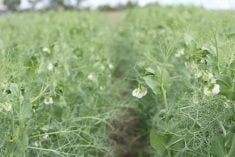North Africa is living up to early-season expectations of producing a bin-busting durum crop.
“Abundant rainfall and near-ideal growing conditions have resulted in a very large durum crop, which will lower this region’s import demand,” the Canadian Wheat Board said in a June 11 crop update.
North Africa is an important buyer. As of the end of April the region, comprising Tunisia, Morocco and Algeria, had bought 1.1 million tonnes of Canadian durum, or 41 percent of this year’s export program.
Sales are slightly ahead of 2007-08, when Canada shipped 1.4 million tonnes to North Africa or 45 percent of that year’s program.
Read Also

Phosphate prices to remain high
Phosphate prices are expected to remain elevated, according to Mosaic’s president.
As a result, any increase in production in that region is worrisome. The International Grains Council estimates North Africa will produce 5.1 million tonnes of durum in 2009, up from 3.4 million tonnes in 2008.
“Obviously it will mean lower exports into North Africa,” said Bruce Burnett, the wheat board’s director of weather and crop surveillance
However, he noted the three North African countries would need to rebuild reserves after two years of drought in 2007 and 2008. As well, there could be a dearth of quality durum.
“There will still be some import requirements from the region. It’s not like they’re going to be self-sufficient with these numbers and build stocks at the same time,” Burnett said.
North Africa’s big durum production is expected to be offset by a smaller European Union crop. The International Grains Council forecasts 8.3 million tonnes of EU production, down 1.7 million tonnes from 2008.
Burnett expects the result is a wash when it comes to durum prices. Yet to be seen is how North American production turns out.
The wheat board expects Canadian production will fall to 4.4 million tonnes, down 14 percent from Agriculture Canada’s latest estimate.
Erica Olson, marketing specialist with the North Dakota Wheat Commission, said U.S. durum acreage is down, but production of about 2.3 million tonnes should be on par with last year because of improved weather conditions.
Delayed seeding in the northern tier states affected durum less than it did spring wheat, and moisture is much improved.
“We’re actually looking better right now than we were a year ago,” she said.
In some areas of North Dakota, durum prices match spring wheat prices. If prices drop lower, growers will look for alternatives.
“Even though the situation doesn’t look that favourable right now for prices, I think there is potential if we start to see little production issues pop up anywhere.”















